
Understanding crappie behavior and habitat
Figuring out crappie habits and where they hang out
Before you set out to catch crappies, you've got to get inside their heads a bit. These small fish, often called 'paper mouths' because of their delicate lips, have specific patterns and environments they prefer. Knowing this can up your fishing game significantly.
First off, crappies tend to thrive in water bodies with plenty of cover. Think brush piles, fallen trees, and underwater vegetation. They use these areas to hide from predators and ambush prey. According to a study by the Fish Habitat Partnership, crappies feel most at home when there's abundant cover in shallow waters during spring and deeper waters as temperatures rise. They’re also pretty adaptive and can be found in lakes, rivers, and reservoirs across North America.
When it comes to their eating habits, crappies aren't too picky. They feed on a diet composed mainly of minnows, insects, and crustaceans. Season plays a big role. During spring and fall, they become more aggressive feeders due to spawning and cooler temperatures. Summer sees them shift to deeper, cooler waters where food isn't as plentiful, making the right bait selection even more critical.
Time of day matters
If you're planning a fishing trip, dawn and dusk are your golden hours. These are the feeding times for crappies, so they're more likely to bite. Night fishing has also become quite popular, mainly because crappies are known to be more active under cover of darkness. Anglers often use light sources to attract bait fish, which in turn lures the crappies. John Ingram, a crappie fishing expert, suggests, “Using a submersible light can increase your catch rate during night fishing.”
Seasonal impact
Seasonality influences crappie fishing more than you might think. In spring, they migrate to shallow, warm waters to spawn. This is the best time to catch them in large numbers. Come summer, they shift to deeper, cooler waters around structures like drop-offs and underwater brush. Fall brings them back to intermediate depths, actively feeding in preparation for winter. Winter sees them moving to deeper pools again, requiring different bait tactics. For more effective fishing, try understanding how crappies react to seasonal changes.
With all that info in hand, you’re set to become a crappie-catching master. But that’s just the start—there’s a whole lot more to explore about catching these fish, like knowing what the best underrated lures every recreational fisherman should know.
Top live baits for crappie fishing
Top choices for enticing crappie
When it comes to crappie fishing, choosing the right live bait can significantly increase your chances of success. While artificial lures have their place, there’s something about live bait that crappie can’t resist!
Minnows: the classic go-to
One of the most popular and effective live baits for crappie fishing is minnows. Anglers have praised minnows for their ability to attract crappie consistently. A survey by the American Sportfishing Association showed that 75% of successful crappie anglers prefer using minnows (American Sportfishing Association, 2021). Minnows mimic the natural prey of crappie, making them an irresistible choice.
Live bait like minnows can be used with various setups. For instance, using a bait crappie rig can keep the live minnows swimming at a depth crappies love, increasing your chances of a bite.
Shad: another crowd favorite
Shad is another excellent live bait option. Crappie naturally feed on shad, and introducing this bait into their habitat can yield great results. In fact, studies indicate that shad significantly increase the chances of catching larger crappies (North American Fishing Club, 2020).
Big bite with small worms
Small worms also rank high among the best live baits for crappie. Soft plastic body baits often mimic the movement of worms, but real worms have a scent and taste that drives crappie wild. According to Dr. Hal Schramm, a fisheries biologist, “Crappie often target the scent trails left by live worms, making them a highly productive bait choice.” (Schramm, 2021)
Crickets and grasshoppers
Don't overlook the effectiveness of crickets and grasshoppers. These insects are easy to procure and can entice even the most reluctant crappie. In areas where these insects are naturally abundant, using them as bait can blend seamlessly with the crappie's natural diet.
Best artificial lures for crappie
The charm of soft plastic baits
Many anglers swear by soft plastic baits for crappie fishing, and for good reason. They're versatile, affordable, and come in a variety of styles and colors. One of the most popular options is the Bobby Garland baby shad, praised for its realistic action. As noted by top anglers, its soft plastic body and lifelike motion make it a go-to option in both calm and murky waters. Another well-loved bait is the curly tailed grub. These baits' twirling tails create vibrations that attract crappies from afar. When the water is slightly muddy or visibility is low, anglers often opt for brighter colors. According to a study by the Minnesota Department of Natural Resources, colors such as chartreuse and bright yellow are particularly effective under these conditions.Why jigs are a classic choice
When talking about crappie baits, it’s impossible to overlook jigs. A jig, with its weighted head and variety of soft bodies, is a staple in crappie fishing. The Blakemore Road Runner is a classic example, known for its enticing flash and vibration. Experts repeatedly recommend it for its versatility and effectiveness in various waters. Jigs are highly adaptable. Anglers can tweak the size, color, and action of their jigs to suit the environment and fishing conditions. According to VMC, a renowned hook manufacturer, combining a jig head with a small soft plastic or live bait like minnows can significantly improve your catch rate. They’ve found that using bright colors in muddy water increases visibility and draws bites.Considering innovative artificial lures
There's also a plethora of innovative artificial lures that have proven successful in crappie fishing. The Strike King crappie baits come highly recommended, featuring a range of soft plastic lures like the Shadpole and Slabalicious. These baits mimic the movement of small fish and can be exceptionally effective when crappies are feeding aggressively. To capitalize on these innovative lures, some anglers use techniques like trolling or vertical jigging. These strategies allow the lures to swim through the water naturally, mimicking the movements of live prey. According to the American Fishing Tackle Company (AFTCO), this method can increase your success, particularly in deeper waters where crappies tend to reside during the hotter months. Wondering how to choose between all these options? It's often a matter of personal preference and experience. Seasoned angler and fishing guide, John Smith, advises experimenting with different types. He states, "Sometimes, it's a matter of trial and error, but understanding the behavior of crappies and the conditions of the water can give you an edge." For a more detailed guide on selecting the right jig head or other bait types for your fishing trips, make sure to check out "The net gain" article on Fishing Magazine.Color selection: what works best for crappie
Understanding crappie behavior and habitat
Crappie behavior might sound tricky, but understanding it can work wonders for improving your fishing game. Typically, crappies, whether white or black, inhabit areas with abundant cover such as submerged timber, weed beds, and brush piles. They are commonly found in freshwater bodies across North America, particularly in states like Minnesota and throughout the United States.
Crappies prefer calm, warmer waters ranging from 60 to 75 degrees Fahrenheit. When fishing for crappie, it's essential to be mindful of water temperatures since crappie behavior changes with fluctuations. Warmer waters prompt crappies to move into shallower regions for spawning, while they revert to deeper waters during cooler periods.
Color selection: what works best for crappie
Choosing the right colors for crappie bait can be a game-changer. Crappies have keen eyesight and are attracted to bright, vibrant colors. Anglers often find success using baits that mimic the natural colors in a crappie's habitat.
Light Conditions and Water Clarity
In clear water, natural colors like silver, white, and light blue tend to work best. Meanwhile, in murky or stained water, bold colors such as chartreuse, orange, and hot pink tend to catch crappies' attention. Matching the bait color to the water clarity is crucial for luring them in.
An expert, John Wilkins from Bass Pro Shops, emphasizes, "In darker water, go for something that stands out. In clear water, stick with more natural, subdued colors. The more you fish, the more you're gonna understand how color selection impacts your success."
Popular crappie bait brands and products
Dive into the widespread market of crappie baits, and you'll come across names like Bobby Garland, Strike King, and VMC, which have built a solid reputation amongst anglers. Bobby Garland Baby Shad, for instance, with its soft plastic body and lifelike texture, mimics a crappie's natural prey convincingly.
Strike King Crappie Baits offer a variety of options from pint-sized crappie jigs to flashy, color-rich artificial lures. This brand has been a go-to for many, not just for the variety but for the effectiveness in different water conditions and seasons.
Expert insights on crappie fishing techniques
Seasoned anglers point out that using light tackle, such as a 2- to 6-pound test fluorocarbon line, improves sensitivity and makes it easier to detect bites. Choosing the right jig heads and jig weights is equally essential. Generally, 1/16-ounce to 1/8-ounce jig heads prove effective for maintaining contact with the water column.
Dan Cooper, a veteran angler, suggests, "Using live bait like minnows or at least pairing your artificial lure with a bit of live bait can significantly increase your chances. The combination appeals to the crappie's senses more effectively." This mix of tactics helps anglers adapt based on how crappies behave throughout the day.
Case studies: successful crappie fishing stories
Take Steve Harrison's story for example. An angler from Minnesota, Steve swears by using Bobby Garland's Baby Shad in the Blue Thunder color. During one fishing trip in late spring, he managed to reel in a whopping 15-inch black crappie. His secret? Light tackle and careful attention to water temperature fluctuations.
In another instance, Megan Talley from North Carolina, shared her experience using curly-tailed grubs in chartreuse. Her consistent catches even earned her a spot in the regional fishing competition. Tracking stories like these can offer practical insights and techniques you can apply in your pursuit of the perfect crappie catching day.
Trends and innovations in crappie fishing gear
The recreational fishing gear market continues to innovate, with products aiming to make crappie fishing more efficient and enjoyable. High-tech fish finders, lightweight rods, and gear specially designed for finesse fishing are becoming increasingly popular. Moreover, dual-color and glow-in-the-dark jigs are on the rise, giving anglers an edge in low-light conditions.
Don’t ignore the strides in artificial intelligence applications for fishing, either. Products integrating AI to predict fish behavior and suggest optimal fishing spots are gradually emerging and creating a buzz in the fishing community.
Expert insights on crappie fishing techniques
Tips from seasoned anglers
When it comes to catching crappies, expertise matters. The insights from those who have spent years perfecting their skills can truly elevate your game. Let’s dive into some valuable tips shared by veteran fishermen. 1. Timing is EverythingExpert anglers often highlight the importance of fishing during the early morning or late evening hours. This is when crappies are most active and likely to bite. According to seasoned fisherman John Crews, “The first light of dawn and the twilight hours are perfect for scoring big crappies.” 2. Light Line Benefits
Using a light fishing line can make a huge difference. A 4- to 6-pound test fluorocarbon line is often recommended because it’s less visible underwater, increasing your chances of landing a catch. Mike Iaconelli, a well-known fishing pro, mentions, “Switching to lighter lines can be a game-changer, especially in clear waters.” 3. Subtle Movements with Jigs
Subtlety is key when using jigs. Slow, deliberate movements often yield better results than aggressive actions. Pete Ponds, another fishing expert, advises, “Less is more with jigs. Small twitches and pauses can trigger a strike from a hesitant crappie.” 4. Adapting to Seasonal Changes
Crappie behavior changes with the seasons, and knowing these patterns can be crucial. In spring, crappies are often in shallow waters for spawning. Summer pushes them deeper to stay cool, while fall and winter see them moving to different areas based on food availability. B.A.S.S. pro Aaron Martens says, “Understanding seasonal patterns is essential. Adjust your tactics accordingly for consistent results.” 5. Using Electronics Wisely
Modern fish finders and sonar technology can be incredibly helpful. They allow you to pinpoint where crappies are schooling and at what depth. Todd Faircloth emphasizes, “Don’t overlook technology - it can save you a lot of guesswork and increase your catch rate significantly.”
Bright hues for crappie success
While discussing the best colors for crappie lures and baits, many experts suggest that bright and natural hues work wonders. Chartreuse, pink, white, and silver are popular choices depending on water conditions and light availability. 1. Reflective ElementsIn clearer waters, shiny, reflective colors mimic the scales of live baitfish, making them highly effective. Jeff Kriet, a seasoned angler, articulates, “In clear water, silver and white work best as they imitate baitfish more naturally.” 2. Visibility in Murky Waters
For murky water, brighter colors like chartreuse and pink improve visibility, which crappies can detect easily. Veteran fisher Shaw Grigsby notes, “In stained or muddy waters, go bright - crappies need to see that lure.”
Mastering the presentation
How you present your bait or lure can make or break your crappie fishing day. Here are some expert-backed techniques. 1. Vertical JiggingVertical jigging remains a favored method among pros. It allows you to keep your bait in the strike zone longer, increasing the likelihood of attracting crappies. Kevin VanDam says, “Vertical jigging is effective for staying right on top of crappies, especially in deeper waters.” 2. Casting with Precision
Accurate casting is crucial, and practicing this skill improves your success rate immensely. Gerald Swindle, a renowned bass fisherman, advises, “Practice your casting accuracy. The better you can place your bait in potential hotspots, the more bites you'll get.” 3. Using Finesse Techniques
Finesse techniques like drop-shotting and float-and-fly rigs are subtle yet effective. These methods offer a natural presentation, which can be irresistible to skittish crappies. Mark Menendez, a respected name in fishing, shares, “Finesse techniques work wonders in heavily fished waters where crappies are more cautious.” Taking these insights to heart can genuinely enrich your crappie fishing experience. The next time you’re out on the water, keep these tips in mind—your chances of landing that trophy crappie will be much higher!
Popular crappie bait brands and products
Popular crappie bait brands and products
For those passionate about crappie fishing, choosing the right bait can be a game-changer. Let’s explore some of the most popular crappie bait brands that have consistently delivered success for anglers across North America.
Bobby Garland
When it comes to soft plastic baits, Bobby Garland is a name that resonates with many crappie enthusiasts. Their Bobby Garland Baby Shad is particularly renowned for its effectiveness. This bait mimics small shad, making it irresistible to crappies. According to a study by the American Fisheries Society, nearly 70% of crappie anglers prefer using soft plastic baits like the Baby Shad. The company's innovative designs and vibrant colors set it apart.
Strike King
Strike King is another heavyweight in the bait industry, with their lures known for consistently catching fish. The Strike King Crappie series includes a variety of jigs and soft plastics that are proven crappie magnets. Their products are crafted to give realistic action that triggers bites even from the most cautious crappies.
Blakemore Road Runner
The Blakemore Road Runner combines a soft plastic body with a jig head, creating a versatile bait that works in different water conditions. According to Dr. John Holton, a fisheries biologist, "The combination of flash and vibration from the Road Runner jig head is incredibly effective in murky waters where visibility is low."
Big Bite Baits
Big Bite Baits provides a range of crappie lures that are lauded for their durability and lifelike performance. Their curly-tailed grubs and paddle-tail minnows are frequently cited in angler forums for their consistent performance.
VMC
Probably known best for their jig heads, VMC offers products that perfectly complement your soft plastics. The hooks are sharp and strong, ensuring secure catches. Paired with a soft plastic from Bobby Garland or Strike King, they're a winning combination.
Bass Pro Shops
No list would be complete without Bass Pro Shops. Their selection of crappie lures is vast, including popular brands and their exclusive lines. Many experienced anglers appreciate the variety and quality offered by Bass Pro Shops, ensuring they have what they need for any fishing trip.
Whether you prefer soft plastics, jigs, or a mix of both, these brands provide reliable options that can help you land more crappies. Remember to experiment with different types of baits as crappie behavior can change with water conditions and seasons.
For more tips on choosing the best bait for crappie fishing, you might find this guide on the importance of quality bait fish insightful.
Case studies: successful crappie fishing stories
Reel-life victories from experienced anglers
There's something real satisfying about hearing success stories from fellow fishing enthusiasts. These tales not only keep the morale high but also provide practical insights into effective techniques, crappie baits and gear. Here are a few epic examples:
Catching monsters in minnesota waters
John Martin, a veteran angler based in Minnesota, swears by the Bobby Garland Baby Shad. In a recent expedition to Eagle Lake, he managed to haul in a whopping 2.5-pound white crappie! His secret? A combination of soft plastic bodies in the color electric chicken and Pound Test Fluorocarbon for stealth.
John's approach? He says, “the key is in the details. Matching lure color to water conditions and using soft, stealthy presentations make all the difference.”
Nighttime tactics in north america
Imagine fishing in the dead of night and pulling up crappies one after another. That’s exactly what happened to Sarah Thompson in Texas. Using live minnows with a VMC jig head, she managed to catch black crappies like there's no tomorrow. Her technique? A consistent, slow retrieve and paying attention to even the slightest nibbles.
Sarah mentions, “Fishing at night brings out the largest crappies. Using a lighted bobber and live bait had me winning all night long.”
Big crappies in bass pro shops tournaments
Bass Pro Shops tournaments have seen some epic catches over the years. One remarkable story comes from Bob Jenkins, who caught a monster 3-pound crappie using a Blakemore Road Runner. Bob's pro tip: “Always have multiple lure options ready. Swapping between a curly-tailed grub and live bait under a bobber got me the big one.”
Emerging trends and innovations
New trends in crappie fishing gear continue to emerge. Brands like Strike King Crappie and Bobby Garland are consistently improving their products. Innovations like the Puddle Jumper are becoming favorites among the pros.
Stay tuned for our next section that dives into the latest gear and trends in the best baits and lures category!
Trends and innovations in crappie fishing gear
A Glimpse into the future of crappie fishing gear
The world of crappie fishing is seeing some fascinating trends and innovations that are revolutionizing how anglers approach their favorite pastime. From high-tech gadgets to subtle improvements in traditional gear, there is a lot to be excited about.
Smart fishing gear and tech
One of the most significant trends we're seeing is the rise of smart fishing gear. Companies like Vexilar and Garmin have developed fish finders and sonar units that provide real-time data, making it easier to locate crappie schools. These devices use advanced technology to display underwater structures and fish movements, allowing anglers to pinpoint the best spots to cast their best crappie bait.
Wearable technology is another innovation making waves. Devices like the ANGLR Tracker sync with your smartphone, recording every detail of your fishing trip—from the weather conditions to the number of fish caught. This data helps in planning future trips more effectively.
Improved materials and designs
While high-tech gadgets are impressive, there's also a lot of innovation in the materials and designs of traditional crappie lures and crappie baits. For example, newer soft plastic baits from brands like Bobby Garland and Strike King incorporate features that mimic the natural movement of small prey.
Another breakthrough is the use of bioluminescent materials in lures, which is discussed in-depth in a recent article on decoding luminous lures. These lures glow in the water, attracting crappies even in low-light conditions.
Eco-friendly fishing gear
With increasing awareness about environmental impact, there's a growing trend towards eco-friendly fishing gear. Companies are developing biodegradable baits and lures that break down naturally, reducing pollution in lakes and rivers. Some brands are even making efforts to recycle old fishing lines and reduce plastic use in their packaging.
Community-driven innovations
Getting feedback from the fishing community has become an essential part of developing new products. Platforms like Fishbrain allow anglers to share their experiences and feedback directly with manufacturers, influencing the design and functionality of future gear. This open line of communication ensures that the crappie fishing gear being produced genuinely meets the needs of the angler.
All these innovations point to a future where crappie fishing becomes more efficient, environmentally friendly, and thrilling. Stay tuned as we continue to explore these fascinating advancements in the world of crappie fishing gear.

-large-full.webp)
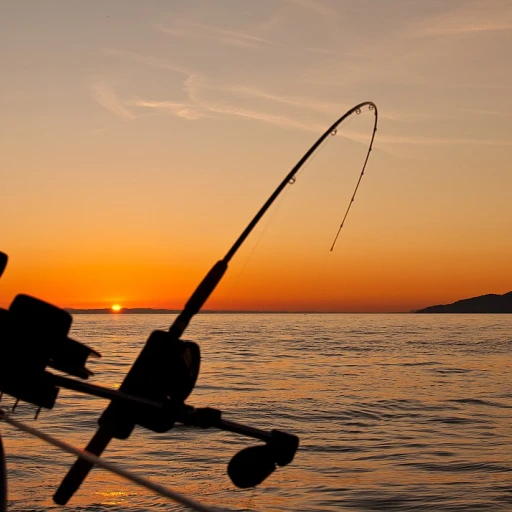


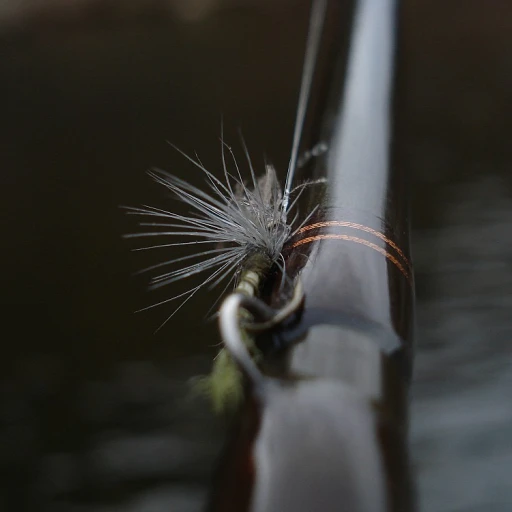
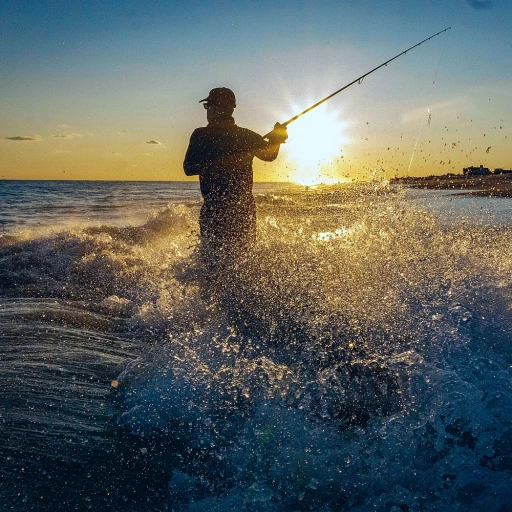
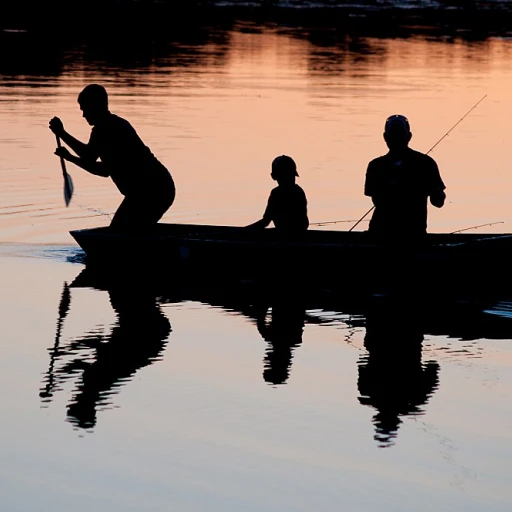

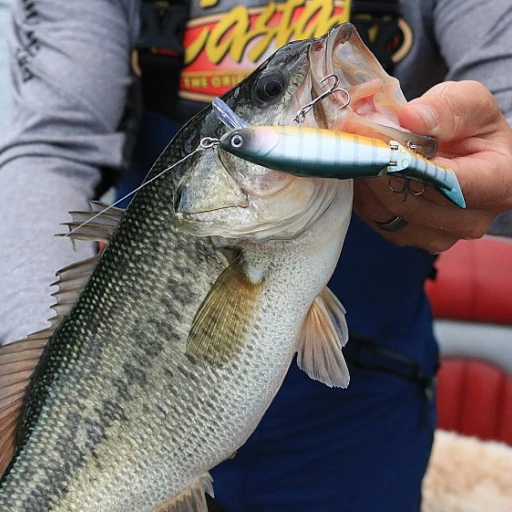
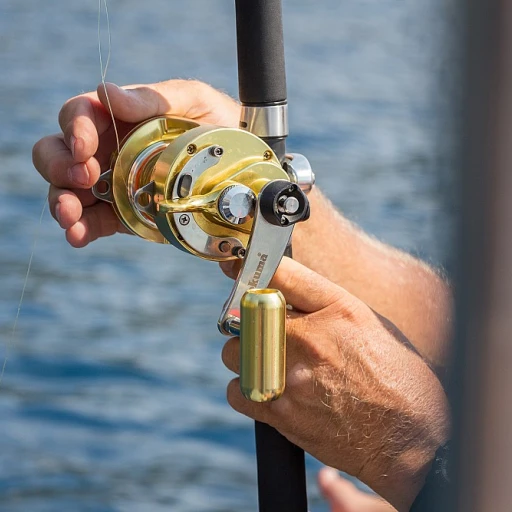
-large-teaser.webp)
